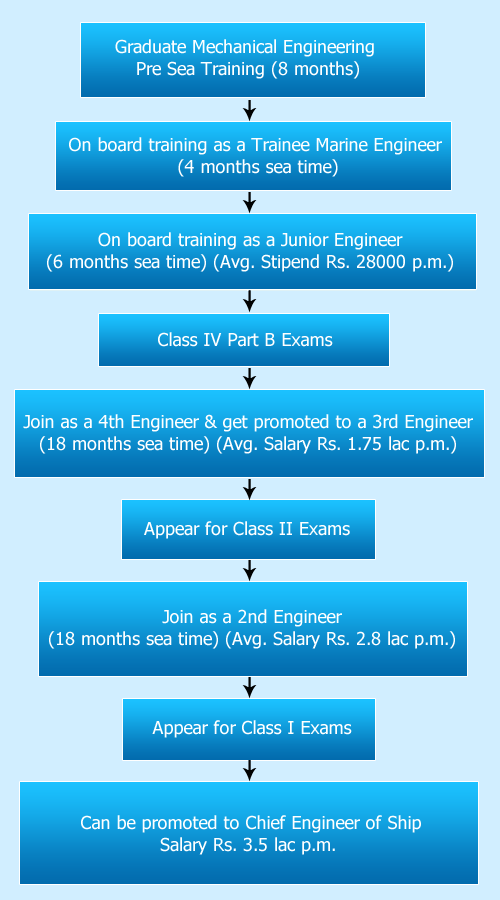 |
|
 |

Join Merchant Navy >

Engineer Officer
|
The engineer is responsible for the running of the engines and their maintenance. An engineer joins as a junior engineer and then progresses to become a fourth engineer, third engineer, second engineer and Chief Engineer.
For those aspiring to be a Chief Engineer, studying mechanical engineering is the starting point, followed by pre-sea training for a year and training on board a ship for six months. An examination can help you gain the post of a fourth engineer and if you perform well, you can become the third engineer on board. It will, however, take another exam after sailing for 18 months to make you a second engineer and another one after 12 months that will make you Chief Engineer.
How to Join?

|
|
|
Career Progression flow chart of Engineer Officer
 |
Send in your bio-data at careers.sea@angloeastern.com
To know more about regulations in shipping you can also visit www.dgshipping.gov.in
top
|
|
 |
